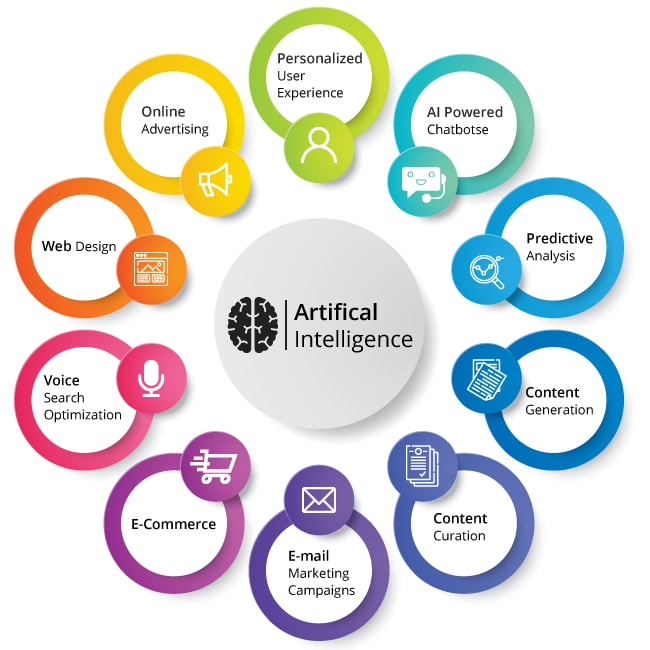What is Responsive AI?
Responsive AI refers to artificial intelligence systems designed to adapt and make decisions in real-time based on dynamic data inputs. Unlike traditional AI models that rely on historical data and are trained to perform specific tasks, responsive AI operates interactively. It constantly processes new information, adjusts its behavior, and makes decisions that are more aligned with current conditions. This type of AI is transforming industries that require quick, adaptive, and accurate decision-making.
Responsive AI’s real-time adaptability makes it highly valuable for applications in industries where time-sensitive decisions can lead to improved efficiency, safety, and outcomes.
Key Components of Responsive AI:
1- Real-Time Data Processing:
Responsive AI systems rely on continuous data inputs to make decisions instantly. Real-time data processing is crucial for industries like finance and healthcare, where delays can have significant consequences.
2- Machine Learning Algorithms with Continuous Feedback Loops:
By using adaptive machine learning models, responsive AI can refine its predictions and decisions with each interaction. This continuous feedback loop is essential for industries like e-commerce, where responsive AI personalizes user recommendations based on recent behavior.
3- Scalability for Large-Scale Applications:
In industries like logistics, responsive AI needs to scale to handle vast amounts of data across multiple sources. Scalability is achieved through cloud computing and distributed systems, allowing AI to process large datasets without performance degradation.
4- Contextual Awareness and Situational Adaptability:
Contextual awareness is a feature that enables responsive AI to understand the current environment or situation. For instance, in autonomous vehicles, the AI must constantly adapt to changes in road conditions and traffic patterns.
Real-World Applications of Responsive AI Across Industries:

1. Healthcare
- Example: Real-time diagnosis assistance. Responsive AI systems can analyze medical data as it’s collected, providing doctors with instant insights. For example, IBM Watson for Oncology helps oncologists by processing patient data in real-time and suggesting potential treatment options.According to a McKinsey report, responsive AI can improve diagnostic accuracy by 25%, helping healthcare providers make more informed decisions faster.
2- Finance:
- Example: Responsive AI in stock trading platforms. Real-time financial data helps AI-driven trading algorithms adjust to market changes immediately, mitigating risks associated with volatile stocks.A report from Deloitte shows that responsive AI trading systems have increased portfolio returns by 30% for certain firms by dynamically responding to market fluctuations.
3. Retaommerce:
- Example: Personalization engines for customer engagement. Amazon’s recommendation system is an example of responsive AI that adjusts product suggestions based on real-time user behavior. This adaptation increases customer satisfaction and sales.Studies show that responsive AI can increase conversion rates in e-commerce by up to 15% when personalized recommendations are used.
4. Manufacturing:
- Example: Predictive maintenance in manufacturing plants. Responsive AI systems analyze equipment data in real-time to detect anomalies and predict failures before they happen. This proactive approach minimizes downtime and reduces costs.According to PwC, responsive AI in manufacturing can reduce equipment downtime by 20%, saving companies millions of dollars annually.
5. Autonomous Vehicles:
- Example: Adaptive driving systems in self-driving cars. Autonomous vehicles equipped with responsive AI can interpret real-time traffic and environmental data, allowing them to react immediately to hazards, roadblocks, or weather changes.Research shows that responsive AI in autonomous vehicles could reduce accident rates by up to 90%, potentially saving lives and reducing economic loss.
Challenges in Implementing RAI:
Data Privacy and Security Concerns:
With continuous data collection, responsive AI systems often face privacy challenges. Industries dealing with sensitive information, like healthcare and finance, must comply with regulations like GDPR and HIPAA to protect user data.
Scalability Issues:
As responsive AI requires real-time processing of vast data, scalability can become a limitation, especially in industries like autonomous vehicles, where responsiveness must remain high despite data volumes.
Computational Costs:
Real-time AI is computationally expensive, requiring significant processing power and storage. This high cost can limit responsive AI’s accessibility for smaller organizations or those with limited resources.
Algorithmic Bias and Ethical Concerns:
Responsive AI systems, if not properly monitored, can reinforce biases present in the data they process. Industries must implement rigorous testing and ethical guidelines to ensure fair and unbiased decision-making.
The Future of Responsive AI in Real-Time Decision Making:
Improved Decision Intelligence:
As responsive AI technology continues to evolve, it enhances Decision Intelligence across industries by transforming how data is processed and analyzed in real-time. This capability not only improves decision-making accuracy but also fosters innovative solutions that were previously impossible with traditional AI. By interlinking with Decision Intelligence practices, responsive AI empowers industries to make more informed choices.
Agentic AI and Responsive AI Collaboration:
Agentic AI, known for its autonomy and self-driven behaviors, is complementary to responsive AI. Integrating Agentic AI with responsive systems enables industries to automate complex tasks while adapting to environmental changes. This synergy is highly valuable in sectors like logistics and finance, where autonomous, yet adaptive, systems are essential for operational efficiency.
Adaptive Learning in Customer Experiences:
AI is also enhancing Adaptive Learning technologies. For instance, in education, adaptive learning platforms that respond to real-time student inputs are reshaping personalized learning. With real-time responsiveness, these platforms can tailor content dynamically to match each student’s progress, improving learning outcomes and engagement.
Causal AI for Informed Responses:
Finally, integrating AI with responsive AI can offer even deeper insights. Causal AI enables systems to understand “why” something is happening, allowing responsive AI systems to adapt based not only on real-time data but also on causal relationships. This is particularly valuable in healthcare, where understanding causality can lead to better treatment decisions and outcomes.
Conclusion:
Responsive AI is paving the way for revolutionary chs various industries. Its ability to adapt in real-time, process vast amounts of data, and make intelligent decisions allows it to address complex, time-sensitive challenges. From improving patient care in healthcare to enabling real-time trading in finance, responsive AI is redefining how industries operate. However, as its potential grows, so do the challenges associated with privacy, scalability, and ethics. Organizations must approach responsive AI thoughtfully, balancing innovation with responsible practices.
As responsive AI continues to evolve, its integration with technologies like Decision Intelligence, Agentic AI, Adaptive Learning, and Causal AI will expand its capabilities, making it an indispensable tool for dynamic, data-driven environments. The future of responsive AI is promising, and its impact on real-time decision-making will only deepen as industries harness its full potential. Visit Fast Panda for more informative blogs.


